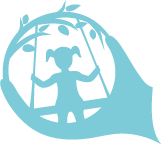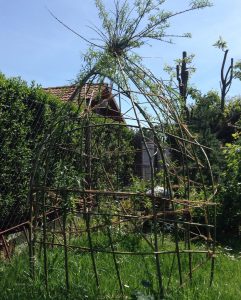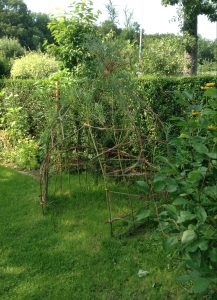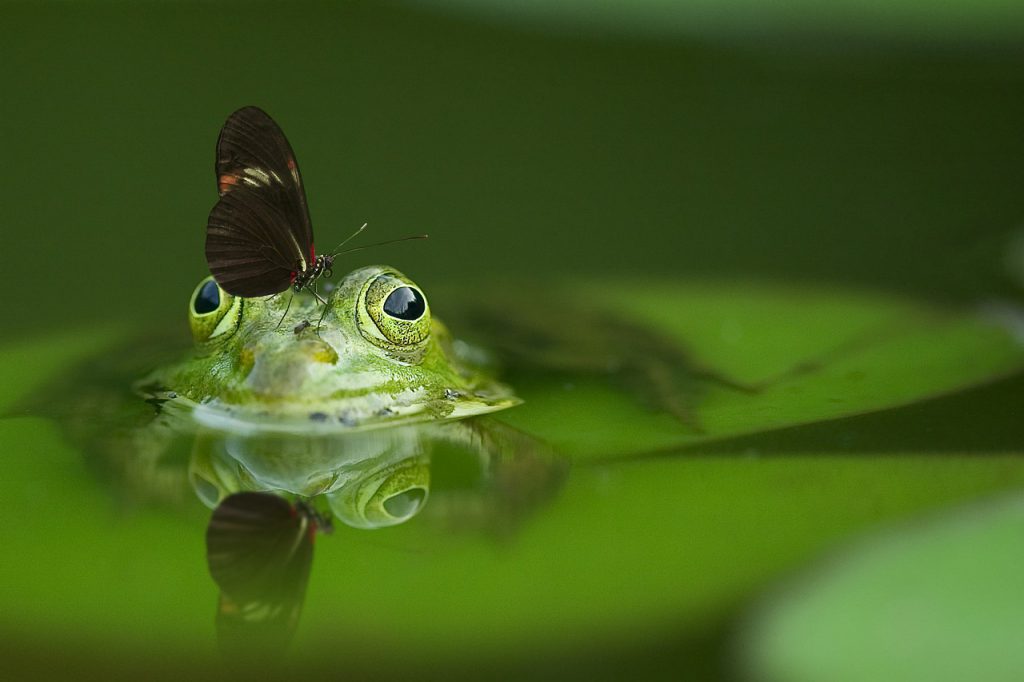
The pond is a large living space that houses a variety of plants and animals. Its living and lifeless environment together form an ecological unit – an ecosystem.
Materials:
- Flexible wire
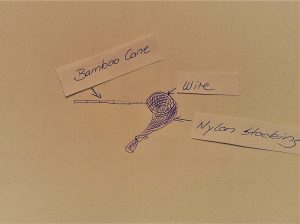
- Bamboo Cane
- Nylon Stocking
- Scissors
- Examination box
- Possibly magnifying glass
- Classification book
Bend the wire to the ring and put it in the bamboo cane. Then pull the nylon stocking over the ring and tie a knot into the stocking. Cut off the end of the stocking.
Let’s Go!
Please carefully reset everything back into the pond!
Children love to play in nature and to create their own world there. This is especially good if the children feel unobserved.
So why not plant a living willow tepee?
Work together with the parents, the daycare and the children and build a living willow tepee.
Planting time: November to March
Materials: Willow Rods and Coconut Rope
Instruction: West Wales Willows
We tried it out in March and the result can be seen! We did not use a groundcover as it is seen in the instruction.
Only a short time ago our Kindergarden organized the half-year flea market. Organized by parents for parents. A small contribution to sustainability, because this is a little counter to the consumption mania and honestly, how long do the little ones wear the often very nice garments.
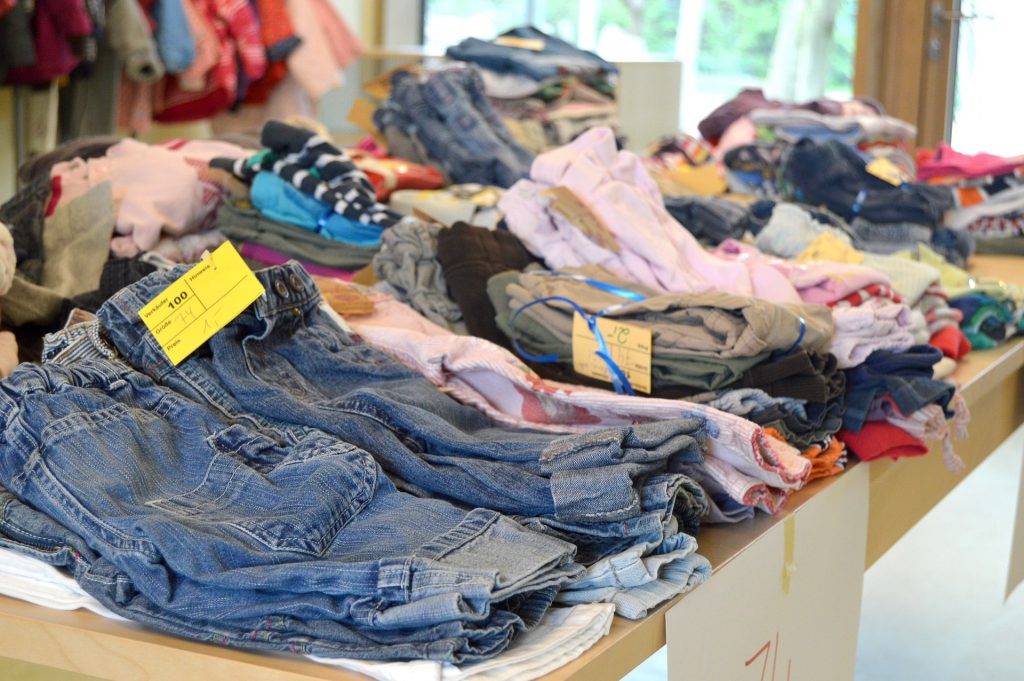
So second-hand is more the best option. In addition, the children can replenish their money if they want to sell some of their toys. Parents and children have a lot of fun with coffee and cakes on the Kindergarden area, that encourages a good kindergarden-parent cooperation.
May and September are a good choice for a flea market to equip the children for the respective summer or winter.
So just do it!
My former professor once said to me that we often underestimate the children, especially the little ones. They can more than we think.
From my experience, I can say that he is absolutely right. My fear was the problem.
But trust yourselves, it’s worth it! It’s so easy and fun to do:
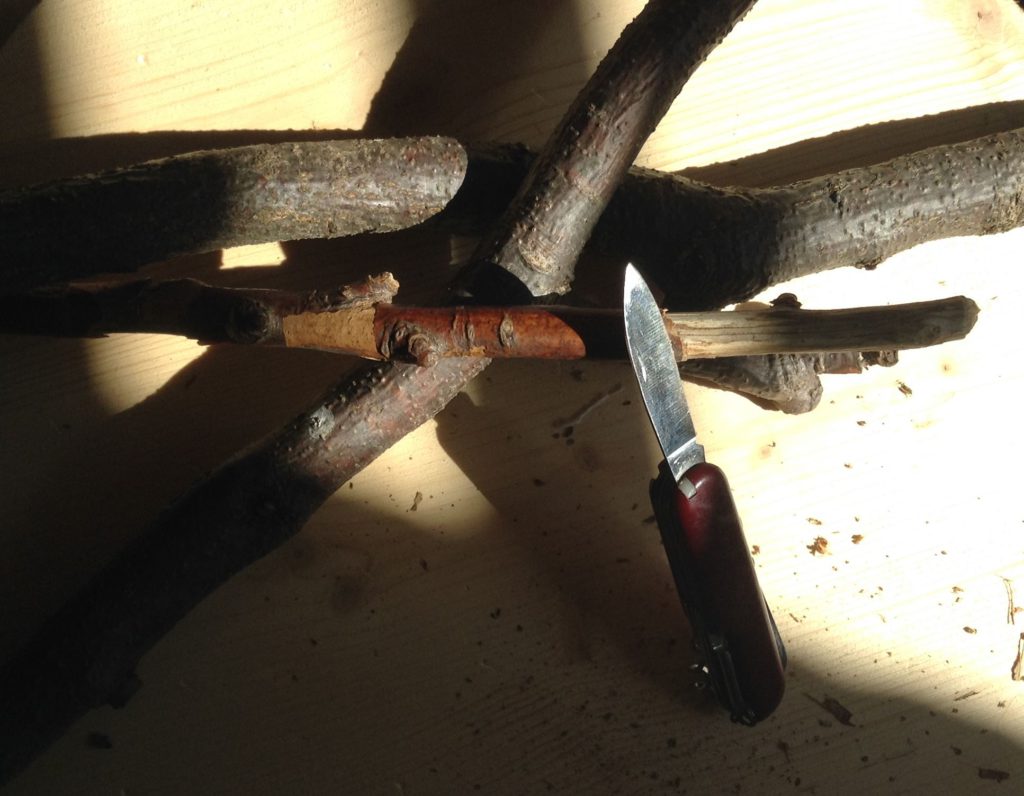
Materials:
- Sticks or
- Scrap Woods
- Carving Knives/pocket knives
- Carving tool (not necessary)
For safety, the rules regarding the handling of knives should be discussed in advance. Then watch the children, but simply let them only if necessary take action .
Amazing how devotional children can go up in such activities. A particularly nice idea, I always find, is the transfer of documents like a ‘ carving licence ‘. This way the children will get a special respect and the eyes will shine.
Do you want your own reserve?
Here you can find an easy guidance sheet with all briefing you need: Wildlife Watch
Materials:
- window box
- small log
- yogurth pot
- compost
- a rock
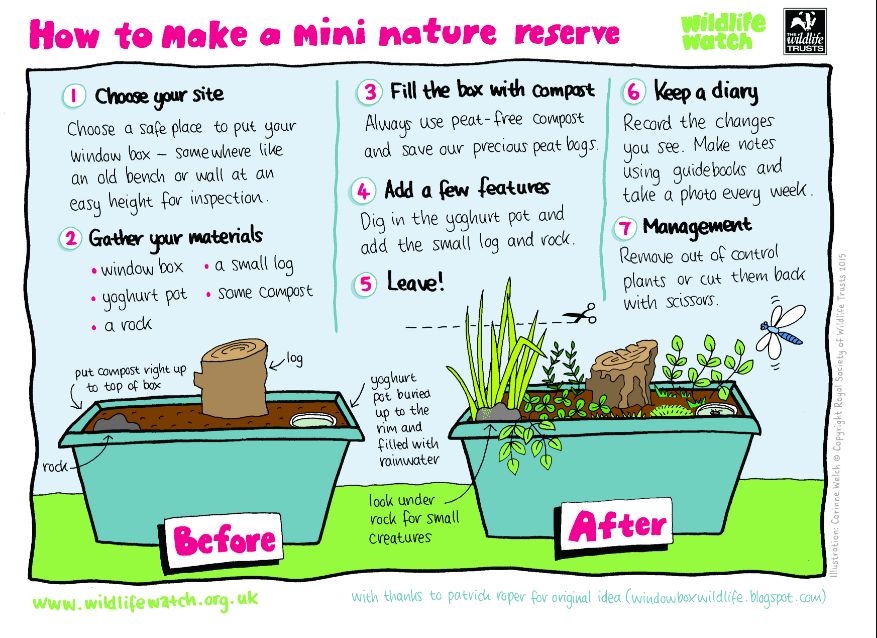
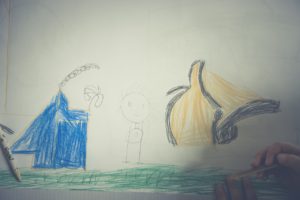 Kids love to draw and to cut, whether at home, in the kindergarten or school. But must it be always new paper?
Kids love to draw and to cut, whether at home, in the kindergarten or school. But must it be always new paper?
From my experience, children often have a problem with it, if already a stroke is painted or the back is already printed.
But just superfluous advertising letters or misprints can be used excellently again and can be provided for the children to painting and handicraft.
It would be too bad if the paper always ends up in the trash.
It saves money and resources!
If we so exactly explain the children how paper is made, extracted from trees and so animals lose their habitat, , some children could be persuaded (from my experience it works very well), to use painted or printed paper. It didn’t bother small children who don’t get to know it otherwise.
Of course, sometimes new papes sheets can be used, then please made from 100% recycled paper.
It must be not always predefined blocks!
Why don’t the carpenters ask, whether wood residues are to give away or to acquire cheap?
Or go in the forest, park or similar and collect the logs, tree branches, etc.
Educational aspect:
The wood remains stimulate not only the creativity of construction, but invite the children to operate artistically. Among others they can paste over the wood, paint, draw with patterns and carve.
Specially manufactured things, also toys, get more appreciation, they are treated more carefully, and at the same time, they learn that you don’t have to buy everything.
 Many people certainly know forest day-cares, where the children are raised close to the nature.
Many people certainly know forest day-cares, where the children are raised close to the nature.
But even conventional day-care centers can deal with natural materials, such as it would be possible to introduce a game day with exclusively natural materials, where it doesn’t just involve outside, but also in the rooms.
The following materials are suitable:
Chestnuts, acorns, kien cones, beechnuts, moss, wool, felt, leaves, sticks, sand, stones, water, straw, nuts, corks, dried flowers, grasses, etc.
A particularly stimulating and appropriate combination would be ‘Invent Mathematics’ the concept of Kerensa Lee – the concept includes the provision of a material in large quantities, the children begin to sort, stack and set pattern. So the children are confronting mathematical basic experiences unconsciously.
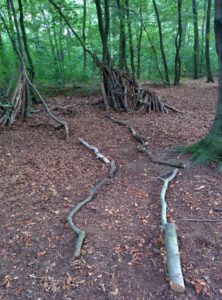 Nature such as the forest, the Park, the Meadow offers the most self-organised, free and creative play for children.
Nature such as the forest, the Park, the Meadow offers the most self-organised, free and creative play for children.
They need no constructed playgrounds with limited usability! Children want to be effective, they want make their environment itself, participate actively, self learn and where they can do that better than in unstructured realm of experience as nature.
So out with the kids, so that they give free rein to their creativity and effectiveness can!

